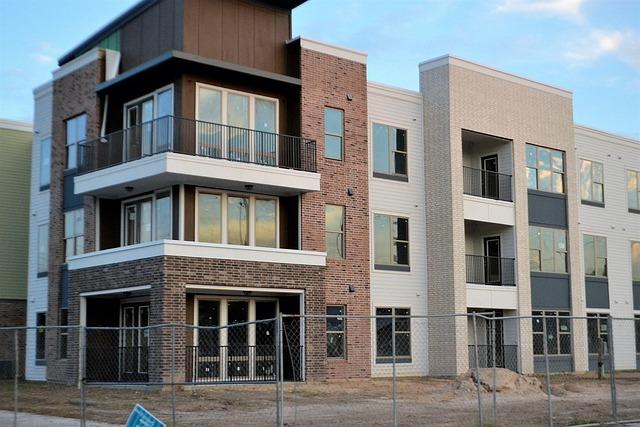Owning rental properties comes with its fair share of challenges—and one of the biggest headaches? Protecting your investment when a property sits empty. Whether you’re renovating, awaiting new tenants, or dealing with unexpected delays, vacant properties pose unique risks that typical landlord insurance doesn’t always cover. That’s why having the right vacant property insurance—and knowing the ins and outs—can save you a lot of stress and money down the road. In this post, we’ll break down essential tips every landlord should know to keep their vacant properties—and their wallets—safe and sound. Let’s dive in!
Table of Contents
- Understanding the Unique Risks of Vacant Properties
- Choosing the Right Coverage for Your Vacant Property
- Practical Steps to Lower Your Vacant Property Insurance Premiums
- How to Prepare Your Vacant Property to Avoid Claims
- Closing Remarks
Understanding the Unique Risks of Vacant Properties
Vacant properties face a distinct set of challenges that can significantly impact a landlord’s investment. Without regular occupancy, these homes are much more vulnerable to issues like vandalism, theft, and unnoticed maintenance problems. For example, without someone regularly checking in, a small leak in the roof might go undetected until it causes substantial water damage. Additionally, empty homes can attract trespassers or squatters, increasing liability risks. Understanding these vulnerabilities is crucial for landlords who want to protect their assets effectively.
Beyond physical damage, vacant properties also carry unique insurance risks that standard landlord policies often don’t cover. Many insurance providers categorize vacant homes as higher risk, resulting in stricter policy terms or elevated premiums. Important factors to consider include:
- Property security measures: Enhanced locks, alarms, and regular inspections can mitigate risks.
- Vacancy time limits: Some policies reduce coverage if the property remains unoccupied beyond a certain period.
- Regular maintenance schedules: Ensuring upkeep helps avoid costly repairs from neglect.
By addressing these specific risks head-on, landlords can tailor their insurance to provide comprehensive protection, avoiding potential gaps that could result in financial loss or legal headaches.
Choosing the Right Coverage for Your Vacant Property
Selecting the appropriate insurance coverage for a vacant property is critical to safeguarding your investment. Unlike occupied homes, vacant properties face unique risks such as vandalism, theft, and unnoticed damages, which can quickly escalate into costly repairs. It’s essential to evaluate policies that specifically address these vulnerabilities. Look for coverage that includes protection against fire, liability, and water damage, along with special endorsements for vacant homes. Additionally, some insurers offer vacancy permits or endorsements to standard homeowner policies, providing flexibility and ensuring your property isn’t left exposed during the vacancy period.
When choosing coverage, consider these important factors to tailor protection to your needs:
- Duration of Vacancy: Some policies require a minimum or maximum time the property can remain vacant before coverage is affected.
- Security Measures: Insurers often look favorably on homes with alarm systems, boarded windows, or regular inspections.
- Coverage Limits and Exclusions: Understand what’s included and what isn’t, especially for high-value items or structural components.
Balancing cost with adequate protection ensures peace of mind, knowing your vacant property won’t become a financial burden should the unexpected occur.
Practical Steps to Lower Your Vacant Property Insurance Premiums
To make a noticeable dent in your vacant property insurance premiums, start by enhancing the security of your property. Investing in robust locks, alarm systems, and even security cameras can significantly reduce risk factors in the eyes of insurers. Regular inspections and maintenance not only keep the property in top shape but also prevent minor issues from becoming costly claims, helping you build a better risk profile. Additionally, consider installing timed lighting or vacancy sensors to create the illusion of occupancy, which dissuades potential vandals or squatters.
Another effective strategy entails reviewing your coverage to ensure it perfectly aligns with your needs. Some policies have optional add-ons that might be unnecessary for your situation, so trimming those extras can save money. Likewise, bundling your vacant property insurance with other policies, such as landlord or home insurance, can unlock discounts. Finally, always shop around annually—insurance markets change, and staying informed lets you seize better deals and avoid getting locked into overpriced contracts.
How to Prepare Your Vacant Property to Avoid Claims
Ensuring your vacant property is in top shape can drastically reduce the risk of costly insurance claims. Start by conducting a thorough inspection to identify and fix any existing damages or vulnerabilities. Pay close attention to the roof, windows, and doors — these are prime entry points for weather elements and unwanted visitors. Additionally, maintain the landscaping to prevent overgrowth that could signal neglect and invite trespassers. Simple repairs like sealing cracks, replacing broken locks, and trimming bushes not only protect your property but also demonstrate proactive care to your insurer.
Beyond physical maintenance, there are several precautionary measures to consider that boost your property’s security and reduce liability. Implement deterrents such as motion-activated lighting and security cameras to discourage unauthorized access. It’s also wise to periodically check on the property or hire a trusted neighbor or professional service to conduct regular walkthroughs. Documenting these efforts with photos and detailed notes can be invaluable if you ever need to file a claim. Remember, a well-prepared vacant property isn’t just safer — it also helps keep your insurance premiums manageable.
- Fix leaks and structural damages before vacancy
- Secure all entrances with sturdy locks
- Use timers for interior lights to simulate occupancy
- Clear debris and maintain outdoor areas regularly
- Establish a reliable check-in routine or service
Closing Remarks
Thanks for sticking with me! Navigating vacant property insurance might seem tricky at first, but with these tips in your toolbox, you’re well on your way to protecting your investment smartly and smoothly. Remember, every vacant property is unique, so take the time to review your policy details and work closely with your insurer. Stay proactive, stay informed, and your property will be safeguarded until your next tenant walks through the door. Happy renting!







